-

Alexa Perez
Email: arp007@ucsd.edu
Undergrad Institution: UC San Diego
Current Program at UC San Diego: Biochemistry and Biophysics
Advisor: Navtej Toor
Structural and biochemical investigation of ncRNA and RNA binding protein interactionsFocus on the structural interactions between novel non-coding RNAs and the formation of RNP with predicted RNA binding proteins. Structural information will be used to aid the biochemical evaluation of RNA and protein functionality.
2024-25 Alumni
2023-24 Alumni
-
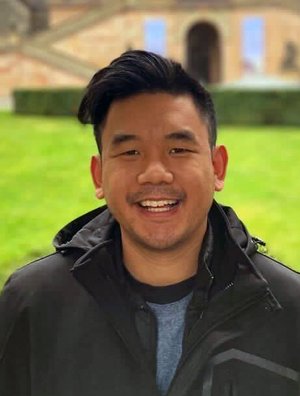
Kendrick Nguyen
Email: khn019@ucsd.edu
Undergrad Institution: UC San Diego
Current Program at UC San Diego: Biochemistry and Biophysics
Advisor: Andres Leschziner
Activation, assembly, and recycling of dynein transport complexes by Lis1Cytoplasmic dynein-1 (dynein) is critical for the proper function of all eukaryotic cells, including cell division and long-range intracellular transport. Dynein exists largely in an autoinhibited ‘Phi’ conformation in cells and must undergo conformational changes to assemble an active complex with its coactivators: dynactin and an activating adaptor. Once active, ATP- hydrolysis drives dynein’s movement toward the microtubule minus ends, from where dynein needs to be recycled back to the microtubule plus ends. Prior functional studies have shown that Lis1, an essential dynein regulator mutated in patients with the neurodevelopmental disease lissencephaly, is important for promoting the formation of active dynein complexes and colocalizes with dynein at the microtubule plus ends. How Lis1 aids in the activation and assembly of the dynein complex, and if Lis1 is important for dynein recycling remains unknown. I propose that Lis1 activates dynein by relieving its autoinhibited Phi confirmation via reorienting dynein to prime it for assembly into active transport complexes. Once dynein reaches the microtubule minus ends, I hypothesize that Lis1’s binding to dynein will lead to conformational changes and complex disassembly to allow for dynein’s recycling back to the microtubule plus end. I will use cryogenic electron microscopy (cryo-EM) to determine the intermediate species of dynein-Lis1 complexes between the activation, assembly, and recycling pathways. I will generate structure-based functional hypotheses based on my cryo-EM data and test the functional implications of my discoveries via functional assays.
-
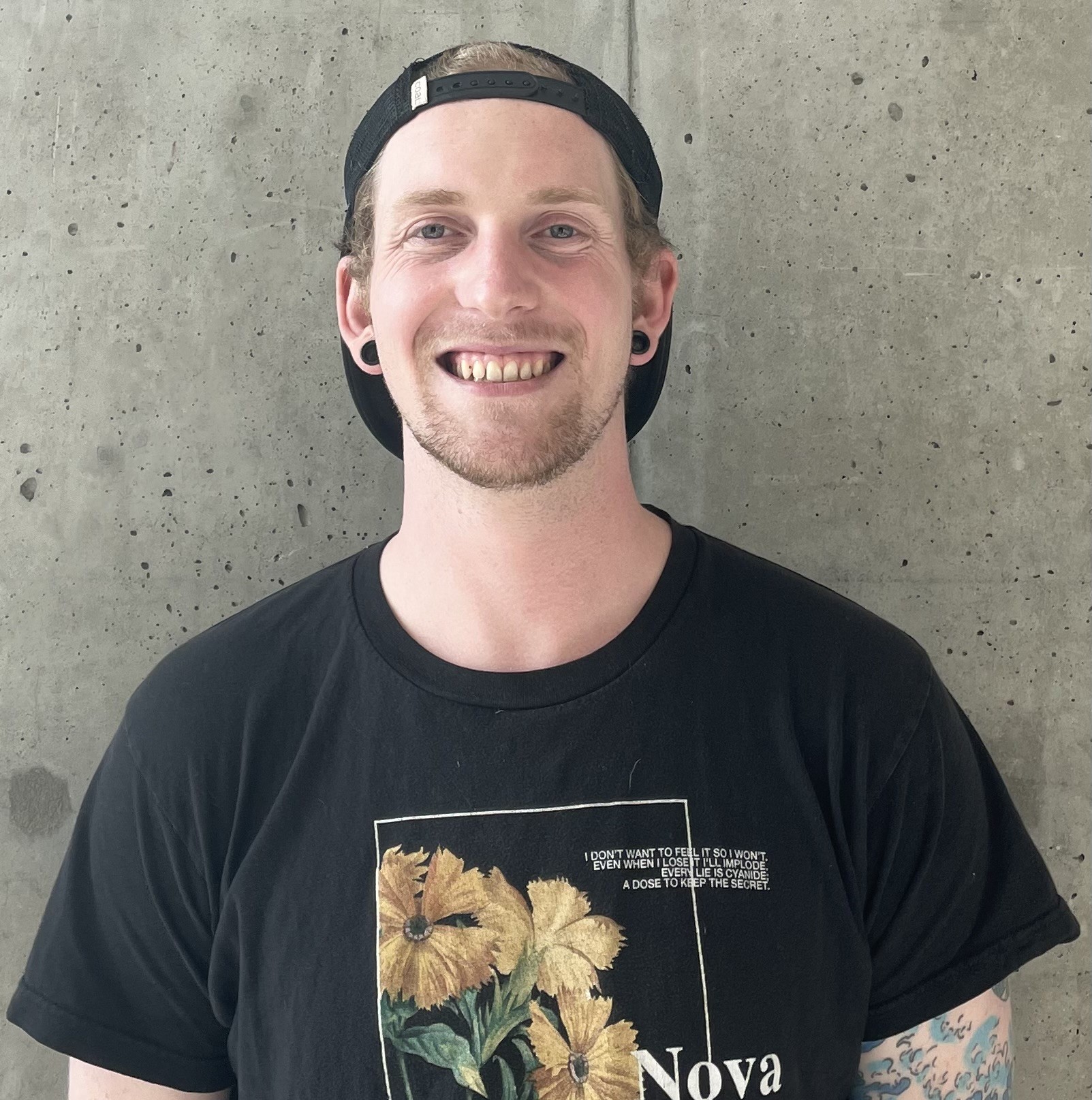
Spencer Nelson
Email: slnelson@ucsd.edu
Undergrad Institution: UCSD
Current Program at UC San Diego: Biochemistry & Biophysics
Advisor: Lalit DeshmukhBiophysical Investigation of Ubiquitin’s Regulatory Role in Retrovirus Budding
Ubiquitin is commonly known as a post-translational modification that targets proteins towards the proteasome for degradation. However, it is also involved in several non-degradative processes including DNA repair, endocytosis, protein trafficking, and viral budding. Specifically, I am interested in investigating the regulatory role ubiquitin plays in retroviral budding of viruses such as HIV-1. Nearly all retroviral group-specific antigen (Gag) polyproteins are ubiquitinated, many pack large quantities of ubiquitin in their virions, and inhibition of the ubiquitin proteasome system impairs the release of viral particles. Ubiquitinated cargo canonically recruits endosomal sorting complexes required for transport (ESCRT) machinery which are important for membrane deformation and membrane scission events. The same is true for viral budding, where recruitment of ESCRT proteins enable viruses to bud from cell membranes. Ubiquitination of Gag appears to aid in ESCRT protein recruitment, however the effect ubiquitination at different sites has on meditating their recruitment is not well understood. Furthermore, ESCRT proteins are known to be ubiquitinated during the budding process, and inhibiting their ubiquitination reduces viral budding efficiency suggesting ubiquitin regulates multiple functions during viral egress. Despite the connection between ubiquitin and viral budding, the precise role ubiquitination plays has not been fully elucidated. Using HIV-1 protein p6 and ESCRT protein ALIX as a case study, I will elucidate the direct consequences of viral protein and ESCRT ubiquitination and assess how this impacts ESCRT protein recruitment and function.
-
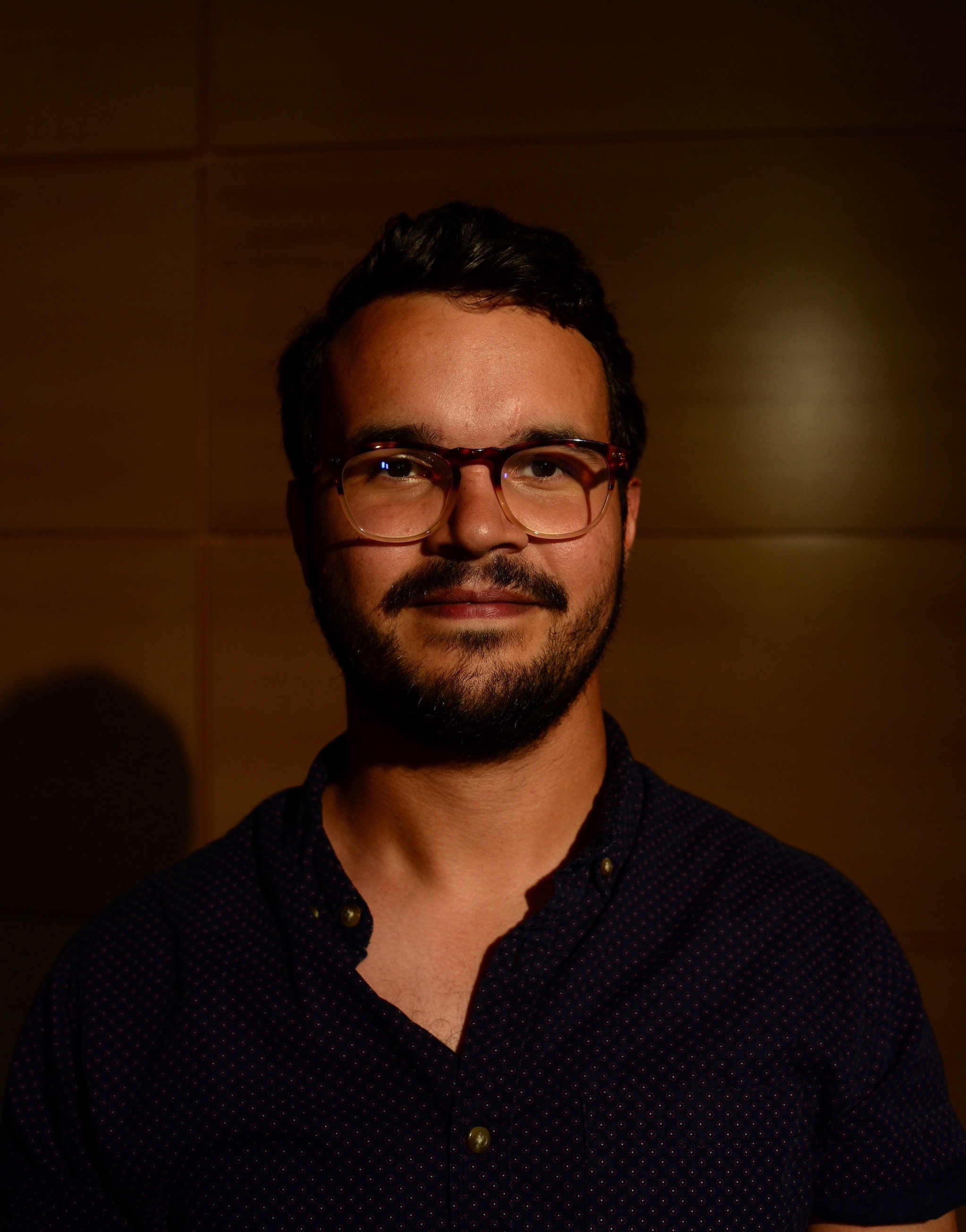
Javier O. Sanlley Hernandez
Email: javi@ucsd.edu
Undergrad Institution: Florida International University
Current Program at UC San Diego: Biochemistry & Molecular Biophysics
Advisor: Rommie Amaro
Application of enhanced sampling methods for studying dynamic processes in viral proteases.Research Summary (1 paragraph): My research involves the use of computational methods to understand substrate recognition and other important dynamic processes associated with viral processes to design effective inhibitors. Examples of such important dynamic events revolve around the capacity of proteases to recognize and bind specific amino acid sequence motifs, which can be elucidated using enhanced sampling methods and inform high throughput virtual screening protocols.
-
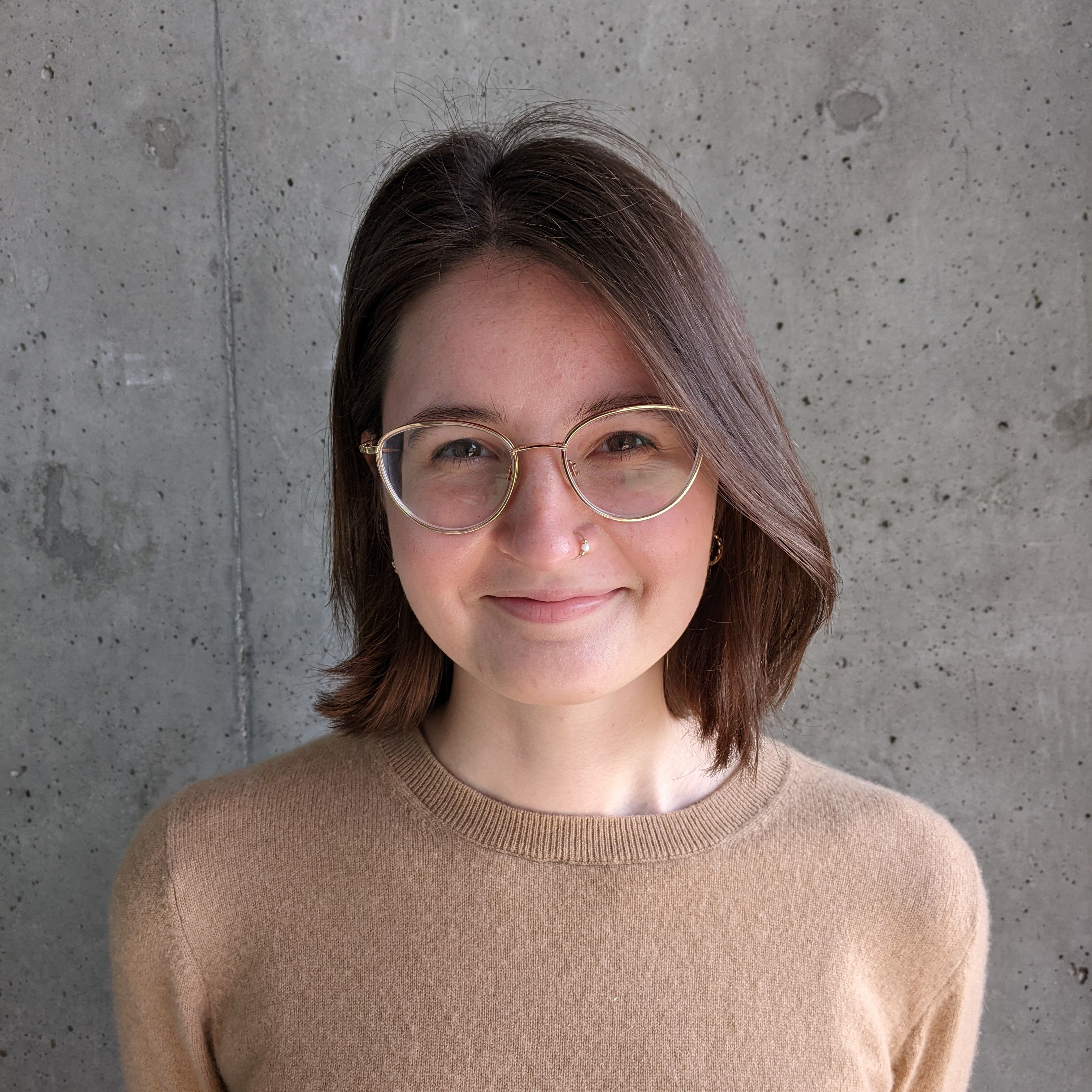
Tristan Gunther
Email: trgunther@ucsd.edu
Undergrad Institution: University of Wisconsin
Program: Biochemistry and Biophysics
Advisor: Dr. Elizabeth KomivesThe role of NFκB’s intrinsically disordered transactivation domain in modulating DNA binding, one-dimensional sliding, and nucleosomal DNA unwrapping
Disordered proteins and protein regions don’t lend themselves to many conventional structural techniques, which is why our understanding of their functional roles remains limited. Despite their overall lack of a defined structure, it’s clearer than ever that intrinsically disordered protein regions are involved in many key functions of innumerable important proteins. One such protein is NFkB, a central transcription factor involved in our inflammatory response pathways, with a large, disordered transcription activation domain (TAD). Although it holds a net-negative charge and lacks obvious interactions with DNA, the TAD has recently been shown to increase NFkB’s affinity for specific and especially nonspecific DNA. Using approaches that include crosslinking mass spectrometry, hydrogen-deuterium exchange mass spectrometry, and single-molecule fluorescence-based assays, I’m probing the interactions of this disordered domain that are involved in modulating DNA binding as well as the impact of nonspecific DNA binding on NFkB’s efficient search for specific sites. Further, I'm investigating NFkB's mechanism of "scanning" DNA, including its one-dimensional sliding behavior and its ability to expose regions of nucleosomal DNA. I hope to not only gain insight into NFkB’s ability to find specific DNA sites and activate transcription, but also to expand our understanding of the multitude of direct and indirect functions of disordered protein regions.
-
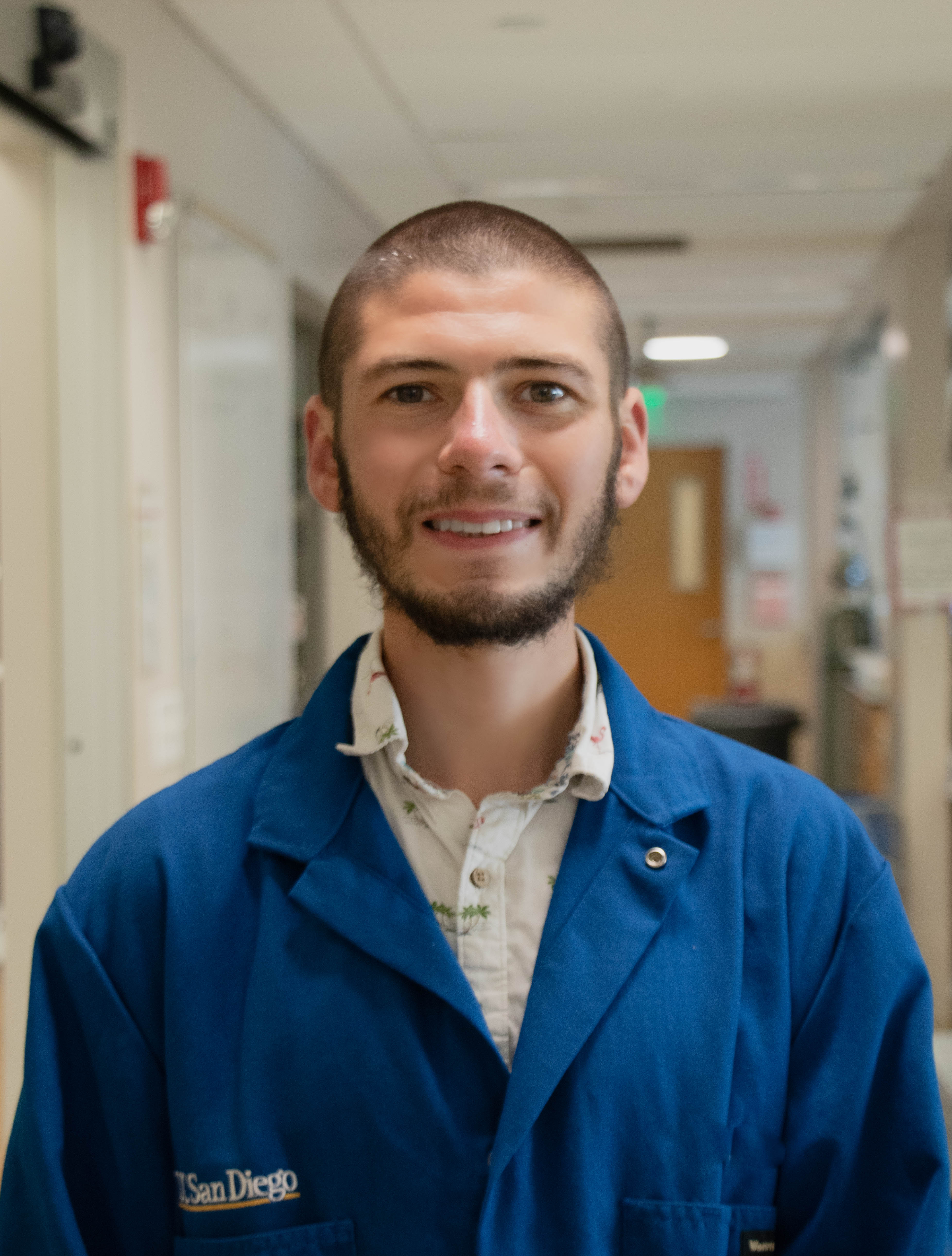
Sam Marchant
Email: smarchant@ucsd.edu
Undergrad Institution: Colby College
Current Program at UC San Diego: Biochemistry and Biophysics
Advisor: Galia DebelouchinaA structural characterization of Doryteuthis opalescens reflectins, DoRA1 and DoRA2
Reflectins are an unusual class of proteins that assemble into reflective structures which contribute to the dynamic coloration used by squid and other cephalopods for camouflage and communication. In contrast to colored pigments, reflective structures are colorless materials that produce structural coloration through scattering of light. Reflective structures produce coloration through either broadband scattering where all frequencies of incident light are scattered coherently, or iridescence where, depending on the geometry and refractive index of the reflector, only certain frequencies of reflected light interfere constructively. Cephalopods alter their appearance through a unique multilayer skin architecture consisting of pigmented chromatophores, iridescent iridophores, and broadband scattering leucophores. The iridescent properties of iridophores arises from the hierarchal organization of self-assembled reflectin nanoparticles into supramolecular architectures that are further packed into lamella. Conversely, a disordered array of reflectin nanoparticle spheres provide Cephalopod leucophores with broadband reflectance. Most cephalopods rapidly adapt their appearance through tuning the frequencies of light transmitted by the chromatophore organs to the reflective cells. However, squid in the family Loliginidae dynamically regulate the reflective properties of the iridophores themselves. In the dermal tissue of such squid, acetylcholine signaling leads to phosphorylation of reflectins which trigger a reversible condensation and higher-order assembly of reflectin nanoparticles and a change in iridocyte appearance from transparent to reflective. This property in combination with their exquisite ability to withstand harsh fabrication techniques, makes reflectins attractive building blocks for biomaterials with novel reflective properties. All though much work has gone into investigating the optical properties and nanoscale structure of reflectins and reflectins based fabrications, atomic level structural analysis into the molecular determinates of assembly is lacking. Therefore, under the mentorship of Galia Debelouchina, I am using solid-state NMR to characterize the structure and molecular determinates of higer-order assembly of Doryteuthis opalescens reflectin-like proteins A1 (DoRA1) and A2 (DoRA2).
-

Jubilee Haddasah Munozvilla-Cabellon
Email: jmunozvilla@ucsd.edu
Undergrad Institution: California State University, Long Beach
Current Program at UC San Diego: Chemistry & Biochemistry
Advisor: Tatiana MishaninaTranscriptional Pausing on Human Mitochondrial tRNA Sequences
During transcription, RNA polymerase undergoes conformational changes that induce
temporary stalls, a phenomenon known as “transcriptional pausing”. In mitochondria, tRNAs must fold into a 3D structure that is recognizable by the following excision proteins: RNAse P (5’) and RNAse Z (3’). Nucleotide modifications by “writer” enzymes have shown to be crucial to form these 3D structures. Additionally, studies have shown the lack of modification due to a missing or mutated base results in an inactive or misfolded mt-tRNA. This can lead to decreased mitochondrial protein synthesis which becomes a causative agent in mitochondrial encephalomyopathy, lactic acidosis and stroke-like episodes (MELAS).
I hypothesize pausing creates a window of time for the writer enzyme to act on its mt-TRNA substrate, and mutated mt-tDNA prevent the polymerase from recognizing pause sites which increases the chance of disease. Under the guidance of Dr. Tatiana Mishanina, I will investigate mitochondrial pausing on wild-type and disease-causing mutated tRNA sequences that undergo modifications for structural stability. -

Amalia Villagran-Suarez
Full Name: Amalia Villagran-Suarez
Email: acvillag@ucsd.edu
Undergrad Institution: UCSD
Current Program at UC San Diego: Chemistry and Biochemistry
Advisor: Andres Leschziner
The mechanism of regulation of Parkinson's Disease-related LRRK2 by phosphorylationParkinson’s Disease (PD) is the second most common neurodegenerative disease, affecting ~10 million people worldwide and 1 million in the USA. While most PD cases are idiopathic, about 10-15% of cases are genetic, linked to mutations in genes coding for one of a relatively small group of proteins. A link between Leucine Rich Repeat Kinase 2 (LRRK2), encoded by the PARK-8 gene, and familial PD was discovered in 2002, with mutations leading to hyperactivation of LRRK2’s kinase; and recently, elevated kinase activity in an otherwise wild-type LRRK2 was detected in cases of the idiopathic form of PD. Although we do not yet understand LRRK2’s involvement in PD, the presence of a hyperactive kinase in both familial and idiopathic PD and the fact that the pathophysiology of LRRK2-induced PD is indistinguishable from the idiopathic disease, makes LRRK2 a good target protein to dissect the cellular and molecular basis of the disease. Phosphorylation of residues in LRRK2’s have been linked to either an increase or a decrease in its kinase activity. My goal in the Leschziner’s lab is to understand, at a mechanistic level, how these different phosphorylation marks change the conformation of LRRK2 and how this plays a role in LRRK2 regulation.
-

Full Name
-

Full Name
2022-23 Alumni
-

Maxwell Bachochin
Email: mbachoch@ucsd.edu
Undergrad Institution: University of Wisconsin-Parkside
Program: Biochemistry and Biophysics
Advisor: Dr. Mark HerzikIn situ structural determination of the PINK1-TOM complex
The mitochondria are responsible for the bulk of the cellular ATP and the biosynthesis of various macromolecular precursors and are thus central in multiple physiological roles. Predictably, mitochondrial health has been implicated in many disease pathologies, including chronic illnesses like diabetes, cancer, and neurodegenerative disease. In the disease state, mitochondria display an array of phenotypic abnormalities, one of which is a characteristic dysregulation of mitophagy. One mitophagic path is the PTEN-induced kinase 1 (PINK1)/Parkin relay system. In the outer mitochondrial membrane, PINK1 accumulates in the translocase of the outer membrane (TOM) complex and recruits and phosphorylates the E3 ubiquitin ligase Parkin, triggering a signal cascade to induce mitophagy. Though rigorous biochemical and structural study has been performed on both the TOM complex and PINK1 individually, details regarding the in situ structures of the PINK1-TOM complex remain completely unknown. Under the mentorship of Dr. Mark Herzik, I am utilizing advanced biophysical methodologies in cryo-electron microscopy and cryo-electron tomography to unveil the structure of this crucial complex in the PINK1/Parkin relay system.
-

Chelsea Blankenchip
Email: clblanke@health.ucsd.edu
Undergrad Institution: Occidental College
Program: Biomedical Sciences
Advisor: Kevin CorbettMolecular mechanisms of metabolite sensing in bacterial antiviral pathways
Bacteria are under constant evolutionary pressure from both bacteriophages, viruses that infect bacteria, and humans, who use antibiotics to treat bacterial infections. In response to this pressure, bacteria have developed antimicrobial resistance and antiviral systems. As antibiotic resistance rises, we are starting to investigate the use of phages to combat bacterial infection, also known as phage therapy. While this may be a promising idea, bacteria have systems, such as the newly discovered CBASS (Cyclic oligonucleotide-Based Anti-phage Signaling System), to prevent the spread of phage infection. By studying CBASS, we will have a preemptive understanding of anti-phage systems before we delve deeper into phage therapy. Specifically, I am studying the CBASS system found in a strain of uropathogenic Escherichia coli (UPEC117) as a model for CBASS. Additionally, I am investigating the mechanisms of a putative transcription factor associated with a large number of CBASS systems. Preliminary data suggests that this transcription factor may be metabolite regulated and that it represents a large family with many signaling roles in different bacteria. Through my research, I aim to expand our understanding of CBASS and determine the mechanism of one of its transcriptional regulators.
-
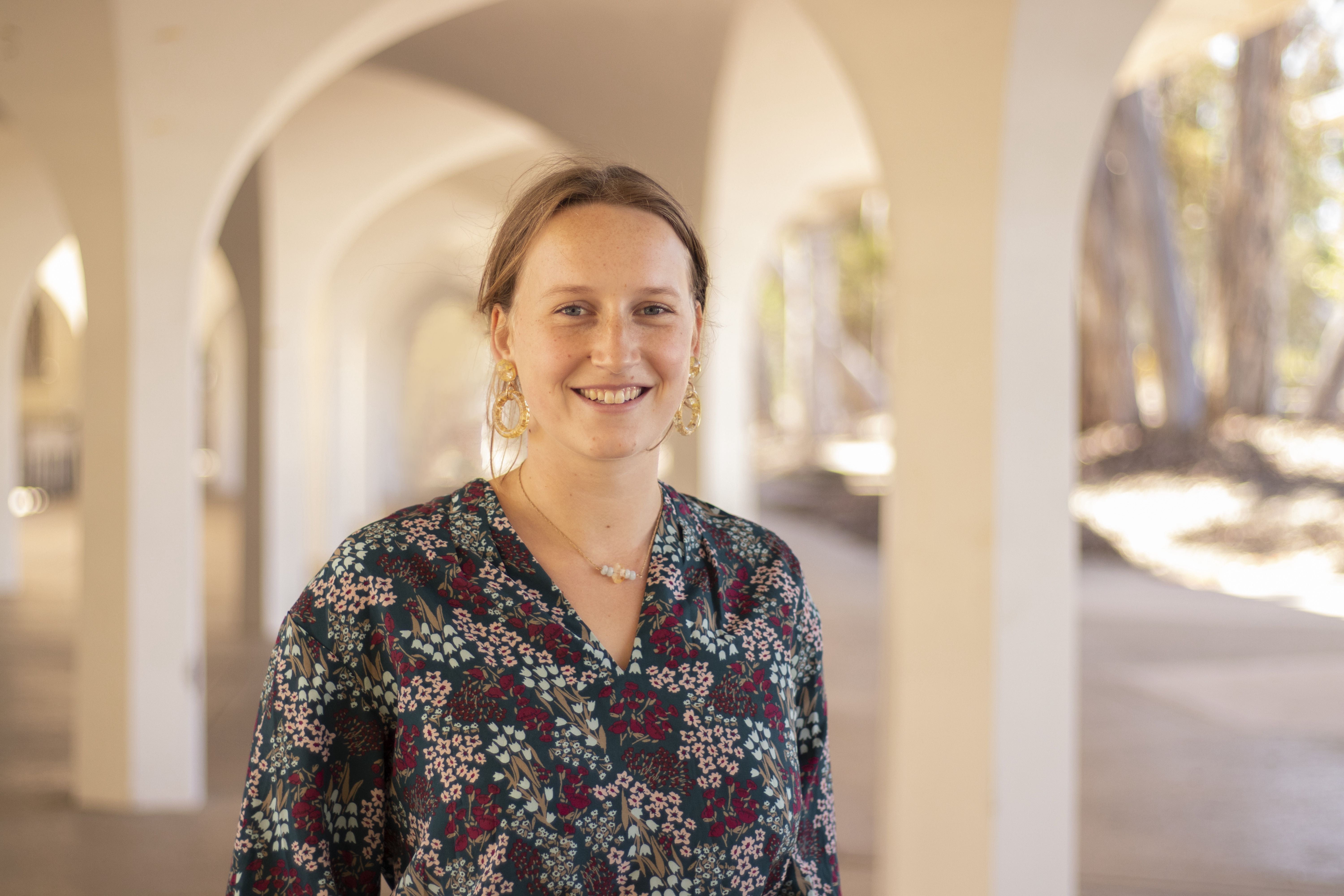
Simone Hall
Email: shall@ucsd.edu
Undergrad Institution: Colorado College
Program: Chemistry & Biochemistry
Advisor: Colleen McHughCharacterization of mascRNA interactions with the multi-tRNA synthetase complex
MALAT1 associated small cytoplasmic RNA (mascRNA) is a tRNA like structure cleaved from the 3’ end of MALAT1, a nuclear long non-coding RNA highly expressed in human tissue and misregulated in metastatic cancers. While MALAT1 is well studied, the function of its cleavage product is not well understood. mascRNA is the most conserved region of the lncRNA, but the role this tRNA-like structure has in the function of mascRNA post processing has not been described. Recently, mascRNA was shown to increase global protein translation by directly binding with glutaminyl-tRNA synthetase (GlnRS), an enzyme that catalyzes acetylation of tRNA-Gln. While mutational analysis predicts that mascRNA binds to a different location on GlnRS than it’s cognate tRNA, there is no structural data for this interaction. Furthermore, other research suggests stabilization of the GlnRS may regulate ex-translational functions of the multi-tRNA synthetase complex. My research aims to solve the structure of this protein/RNA complex and further probe the function of these interactions.
-
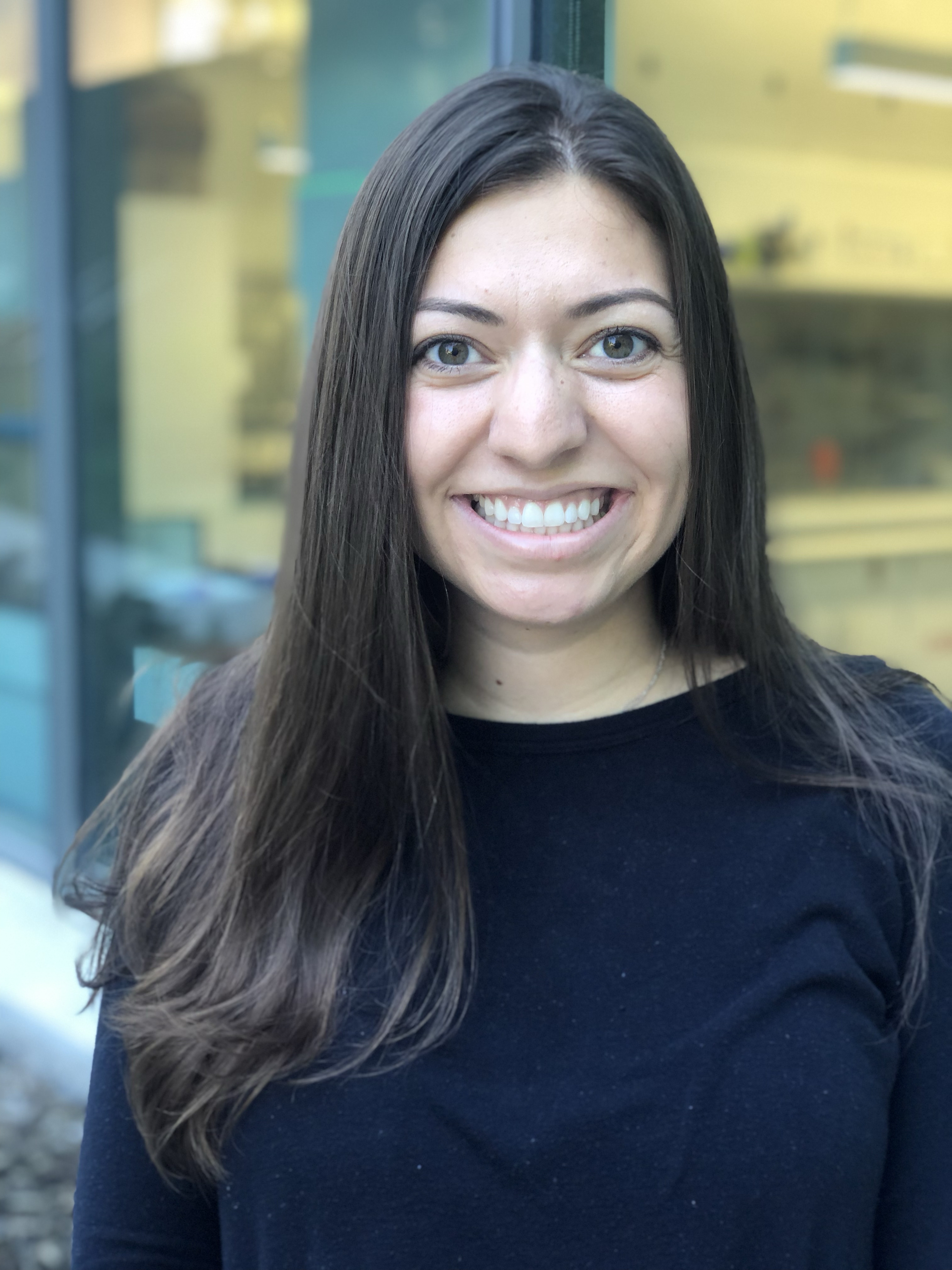
Gillian Gadbois
Email: ggadbois@ucsd.edu
Undergrad Institution: Santa Clara University
Program: Chemistry & Biochemistry
Advisor: Fleur FergusonElucidating the role of alpha-synuclein in disease
Aggregated alpha-synuclein is a hallmark of multiple neurodegenerative diseases including Parkinson’s disease and Dementia with Lewy Bodies. Misfolded alpha-synuclein forms higher order fibrils in disease states and ultimately forms protein deposits in the brain called Lewy bodies. Despite the presence of alpha-synuclein, a basic understanding of the role it plays in disease biology is lacking. A major barrier to understanding the role of alpha-synuclein is the lack of tools to study the aggregated state of the protein. To address this issue, I will be developing and characterizing selective small molecules that clear alpha-synuclein in induced pluripotent stem cell (iPSC) derived neurons. An understanding of how the cell responds to the loss of aggregated alpha-synuclein will inform the role of alpha-synuclein in disease and its potential as a therapeutic target.
-

Marc Morizono
Email: mmorizon@ucsd.edu
Undergrad Institution: Cornell University
Program: Chemistry and Biochemistry
Advisor: Mark HerzikStructural Insights into Mitochondrial Health Regulation using CryoEM
Mitochondria are essential eukaryotic organelles that generate cellular energy, regulate metabolism, and serve as master integrators of numerous cellular processes. For many of these processes to function properly, mitochondria must maintain an electrochemical potential gradient spanning both inner and outer mitochondrial membranes. Importantly, loss of this inner membrane potential causes these damaged mitochondria to be flagged for degradation in a process known as mitophagy. This programmed clearance of impaired mitochondria is vital to maintain cellular health as the accumulation of dysfunctional mitochondria is associated with various diseases including cancers, diabetes, and neurodegeneration.
In humans, the PTEN-induced kinase 1 (PINK1)-Parkin signaling relay serves as a mitochondrial health sensor and the principal regulator of mitophagy. In healthy mitochondria, PINK1 is partially translocated across the outer mitochondrial membrane (OMM) via the translocase of the outer membrane (TOM) complex before being proteolytically processed and released back to the cytoplasm for subsequent clearance. However, upon loss of the inner mitochondrial membrane (IMM) potential, PINK1 accumulates at the outer membrane, recruiting the E3 ubiquitin ligase Parkin for the covalent tagging of impaired mitochondria for clearance by mitophagy. Although PINK1 and Parkin have been identified as key players in the mitophagy pathway, a molecular understanding of PINK1 processing, activation, and subsequent Parkin recruitment remains elusive. My project aims to determine the first 3D structure of hsPINK1 using cryoEM to elucidate the structural features necessary for its critical function.
-

Xandra Nuqui
Email: xnuqui@ucsd.edu
Undergrad Institution: UC Davis
Program: Chemistry & Biochemistry
Advisor: Rommie AmaroIntegrating Dynamics into Protein Design
Designing proteins has become an invaluable process to alter protein activities, improve protein stability, and introduce new behaviors. Rational design is a standard approach that combines computational and experimental methods, however, design strategies are often limited to local mutations, and are not guaranteed to produce the desired change in protein conformation. One major question is how residues can stabilize or destabilize distant areas. Specifically, there are many situations when protein residues were found to allosterically stabilize protein regions. The primary goals of my research are to: (i) understand the biophysical principles underlying allosteric stabilization in proteins and (ii) use these physical principles to design stabilized proteins. In the SARS-CoV-2 spike protein and influenza neuraminidase systems, I will test the hypothesis that small alterations in protein dynamics, such as fast correlated motions detected over short timescales, can impact protein stabilization over long internal distances. The ability to predict the effects of distant mutations will not only provide insight into the long-range modulation of native conformational ensembles, but will considerably expand upon existing static-structure design strategies.
-
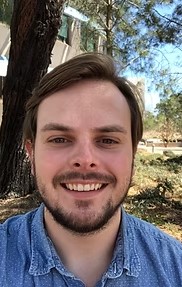
Jacob Vance
Email: jvance@ucsd.edu
Undergrad Institution: Brigham Young University
Program: Chemistry and Biochemistry
Advisor: Neal DevarajLight-activated Fission in Artificial Cells
My project aims to design synthetic membranes capable of undergoing controlled fission. This work is part of a broader effort to generate artificial cells, a major goal of bottom-up synthetic biology. Artificial cell research promises to enhance understanding of fundamental biological processes and accelerate creation of new tools for biotechnology and pharmaceuticals. Designing lifelike synthetic membranes is a central part of the effort to engineer cell mimics and requires engineering artificial membranes that divide. My research will focus on inducing fission in artificial cells by exploiting simple biophysical mechanisms. Specifically, I am seeking to understand what the membrane lipid composition and minimal protein components are that enable fission of synthetic membranes. My work will enhance understanding of the physical mechanisms underlying fission in living cells and will aid development of membranes that can be used as a framework for an artificial cell.
-
Kailash Venkatraman
Email: kvenkatr@ucsd.edu
Undergrad Institution: UC San Diego
Program: Biochemistry and Biophysics
Advisor: Dr. Itay BudinThe Biophysical Basis of Electron Transport Chain Organization in the Inner Mitochondrial Membrane
The organization of cellular membranes plays a crucial role in shaping physiological processes. The arrangement of the Inner Mitochondrial Membrane (IMM) and its relationship to cellular respiration levels and biological energy conversion is a notable example. Within the IMM, a series of membrane-bound protein complexes form the Electron Transport Chain (ETC) which functions to transfer electrons to molecular oxygen and simultaneously transfer protons to produce a proton motive force across the membrane. This proton motive force can be harnessed by ATP synthase dimers to produce ATP, the main source of cellular energy. ETC enzymes are known to form stable supramolecular structures termed Supercomplexes (SCs), which have been shown to contribute to respiratory function1, but through unknown mechanisms. In addition to the role played by ETC enzymes, anionic phospholipids such as Cardiolipin (CL) also contribute to mitochondrial respiration. CL could contribute to respiration through biophysical roles in shaping the IMM morphology, however, the specific mechanisms are not resolved in vivo2. The central question my thesis will address is: How does the inner mitochondrial membrane organization, specifically the protein and lipid arrangements within the membrane, contribute to respiratory performance? I propose a multifaceted approach involving 1) biophysical modeling of yeast IMM structure upon variation of physical parameters such as the bending modulus and spontaneous curvature 2) analysis of SC assembly and its subsequent effect on respiration rates and 3) investigation into membrane organization unique to energy intensive cells. I will utilize experimental perturbations in budding yeast (Saccharomyces cerevisiae) as well as quantitative modeling to ultimately understand how variations in IMM organization can affect respiration rates.
-
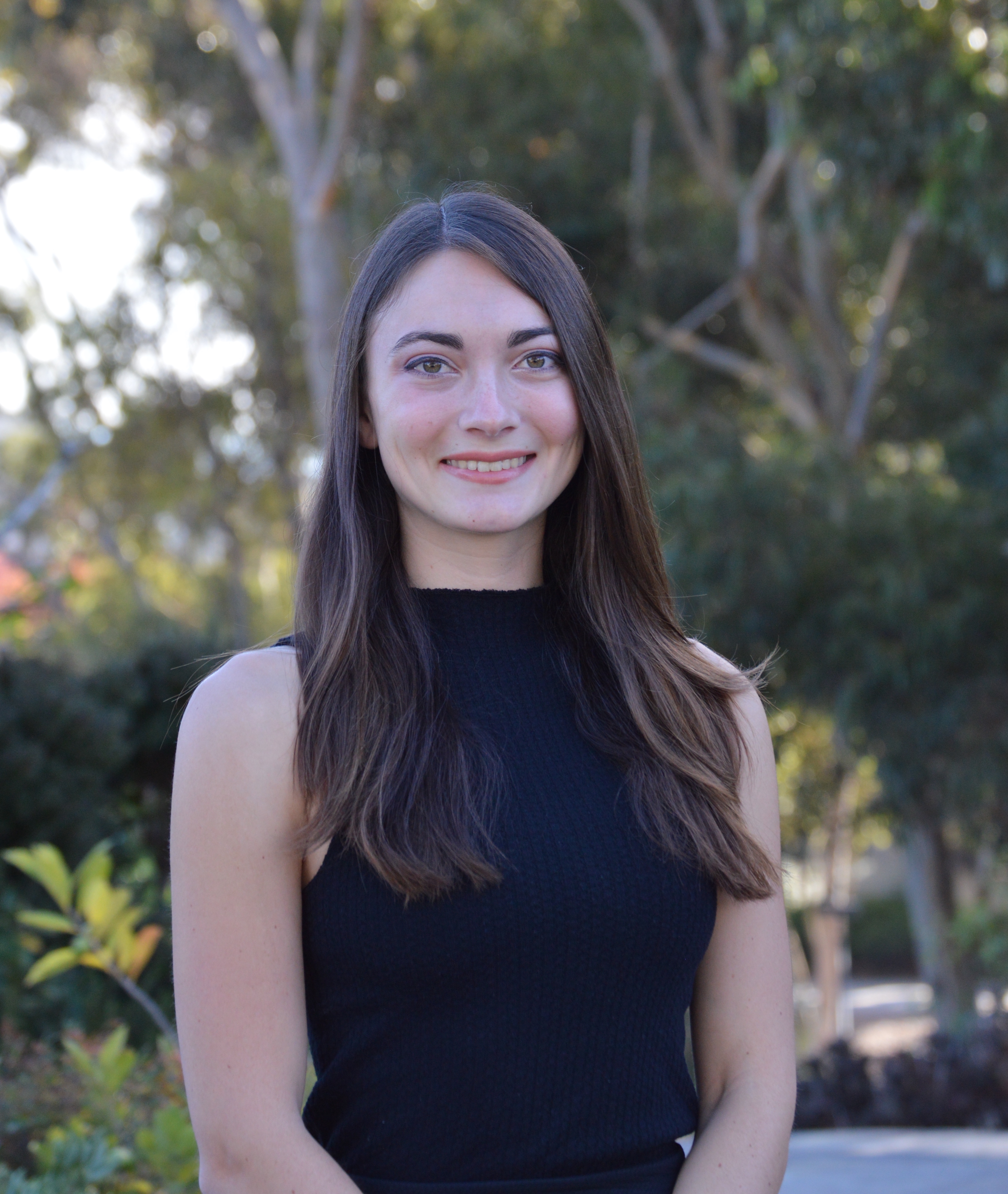
Megan Young
Email: may023@health.ucsd.edu
Undergraduate Institution: UC San Diego
Current Program at UC San Diego: Biomedical Sciences Program
Advisor: Geoffrey ChangStructure and Dynamics of Membrane Transporter Proteins
The passage of small molecules and ligands across the cell membrane is a crucial part of most biological processes, and is facilitated by membrane transport proteins. It is well-known that transport proteins are key regulators in processes such as cell proliferation, metabolism, survival, apoptosis, exocytosis and endocytosis. However, there are still many unknowns in the recognition and binding of substrates and the conformational changes transport proteins undergo to initiate these processes. One highly ubiquitous family of transporter proteins is the ATP binding cassette (ABC) transporters. My project studies the properties of ABC transport proteins: the binding and affinity to multiple substrates that will be analyzed via flow cytometry (FACS) and biolayer interferometry (BLI) experiments, the conformational changes to be validated via hydrogen deuterium exchange (HDX-MS), and the overall structure that I am working to solve via x-ray crystallography and cryo-EM. Using cryogenic electron microscopy to determine the structure of transporter proteins will provide enough data to produce molecular dynamics simulations on a timescale that would allow a view of the ABC transporter channel opening and closing. Studying molecular transport proteins from the perspective of binding and dynamic structures will greatly expand existing knowledge of this large and important family of membrane proteins.
2021-22 Alumni
-
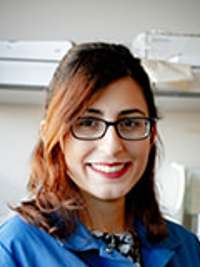
Lannah Abasi
Email: labasi@ucsd.edu
Undergraduate Institution: CSU Northridge
Program: Chemistry & Biochemistry
Advisor: Galia DebelouchinaPhase transitions of tau
Tau is a microtubule-associated protein found in neurofibrillary tangles (NFTs) in the brains of Alzheimer's patients. While tau forms amyloids inside the NFTs, it is unclear how fibrillization initiates in this strikingly soluble protein. Intriguingly, tau and several other amyloidogenic proteins can undergo liquid-liquid phase separation (LLPS), and it was also found that phosphorylation of tau enhances LLPS and that these droplets progress into viscous gel-like states and β-sheet rich aggregates, connecting this process with fibrilization. This has led to speculation that droplets and gels could represent an aggregation prone intermediate in this process, highlighting a need for structural and biophysical studies. My project is focused on understanding the phase transitions of tau.
-

Israel Juarez Contreras
Email: ijuarezc@ucsd.edu
Undergraduate Institution: UC Merced
Program: Chemistry & Biochemistry
Advisor: Itay BudinUncovering the biophysical basis for sterol evolution and diversification in cell membrane
The pathways for sterol synthesis have been studied extensively in vertebrates, fungi and land plants. However intriguing questions remain:
1) Spectroscopic assays show that the main sterol in fungi, ergosterol, has a larger ordering effect on lipid bilayers compared to the main sterol in vertebrates, cholesterol. Yet, yeast can utilize either for growth. What specific advantage do fungi acquire from ergosterol?
2) The sterol intermediates: lanosterol and cycloartenol are likely to have been the initial sterols utilized by the last eukaryotic common ancestor (LECA). What sort of tradeoffs resulted in the LECA to switch between them?
3) It is hypothesized that sterol biosynthesis appeared and evolved because of the oxygenation of the atmosphere. However, there are known sterol-like molecules in bacteria and some eukaryotes that do not require oxygen for their synthesis. Information regarding the biophysical properties and cellular effects of these molecules are limited.
In order to answer these questions, I will be characterizing how different sterol chemistries affect membrane structure and organization through the use of synthetic lipid vesicles and engineered yeast strains. This will lead to fundamental insights on the function of these lipids in membranes and the evolution of eukaryotic cells.
-

Emily Pool
Email: ehpool@ucsd.edu
Undergraduate Institution: Butler University
Program: Chemistry & Biochemistry
Advisor: Susan Taylor and Jin ZhangElucidating the regulation and functional role of RIβ liquid-liquid phase separation
Protein kinase A (PKA), the prototypic kinase model for signal transduction, is a tetrameric holoenzyme of two regulatory (R) subunits and two catalytic (C) subunits. PKA is activated when cyclic AMP (cAMP), a second messenger, binds to the holoenzyme and releases active C subunits. Both R and C subunits have functionally nonredundant isoforms with variable tissue expression. The RIβ isoform’s specific function and localization is not well-characterized. Interestingly, RIβ knockout and mutant mice have shown learning defects, nociceptive pain, and decreased inflammatory responses, which are phenotypes associated with aberrant cAMP signaling. The RIβ isoform, expressed mainly in hippocampal neurons and retinal tissues, has been shown to engage in liquid-liquid phase separation, which challenges our understanding of how cAMP is spatiotemporally regulated. I am using FRET-based biosensors to elucidate how cAMP is buffered and regulated by these RIβ phase-separated compartments. These insights will contribute to the current model of signaling specificity within the cAMP/PKA pathway and provide an improved understanding of cAMP-regulated functions and associated diseases.
-

Brandon Rawson
Email: brawson@ucsd.edu
Undergraduate Institution: UC Irvine
Program: Physics
Advisor: Doug SmithDNA packaging dynamics in bacteriophage T4 and Lambda
Many eukaryotic viruses and bacteriophage are reliant on an ATP-powered molecular motor during assembly to package their genomes into preformed procapsids. These motors bind and hydrolyze ATP to package double stranded DNA to near-crystalline densities against high resisting forces due to confinement. Previous work on bacteriophage T4 has produced a model of the motor protein with two distinct domains, one of which grips the DNA via positively charged residues. Electrostatic interactions drive a conformational change of the two domains which moves the DNA ~2 bp into the viral prohead. I will probe the role of residues in the supposed flexible hinge region between domains, predicted to grip the DNA and that of the residues involved in coupling between the ATP hydrolysis cycle events and translocation. Effects of residue changes in various T4 mutants will be observed using optical tweezers to monitor the packaging kinetics for individual complexes. I am also currently investigating the dependence of lambda’s motor velocities, pauses, and slipping on ATP and slowly hydrolyzed residue concentrations and will look to extend similar measurements to T4 mutants of interest.